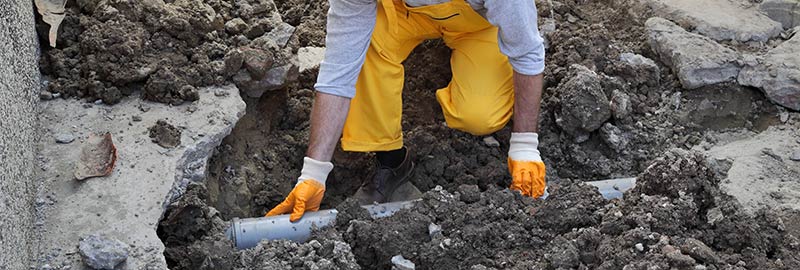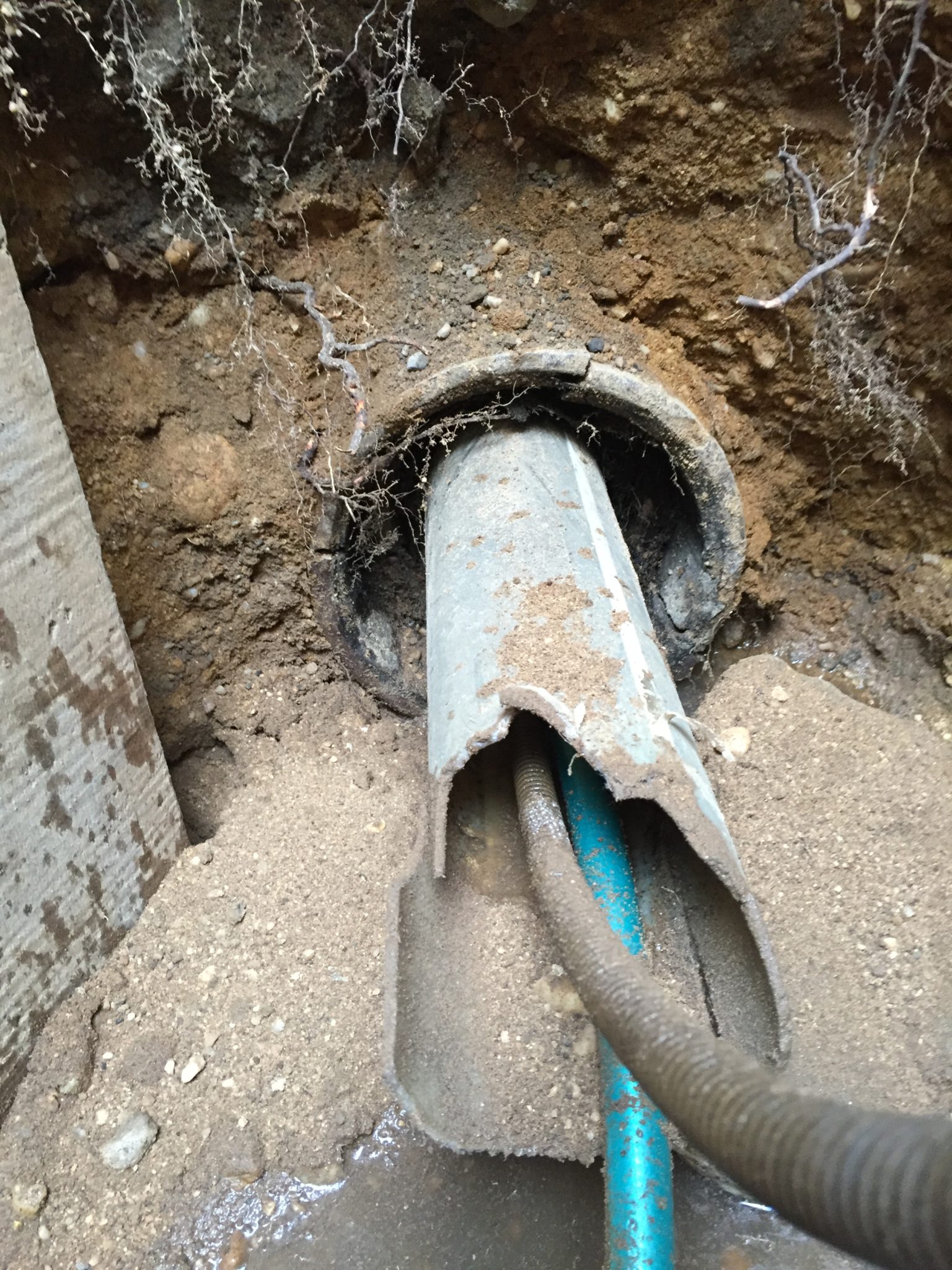DIY Sewer Line Repair: How to Address Issues
Schedule A ServiceAre you hunting for content about How to Fix a Broken Sewer Line?

Troubles with the drain line have actually been really bothering for home proprietors. Combined with the undesirable smell and also stress and anxiety of removing the mess from dripping sewage pipelines, the price of repair work is additionally I the high side. While clogging could be easily investigator, there are some other troubles like leak that are more difficult to identify as well as pricey to be fixed. Sewer line pipes can suffer deterioration as well as logging which leads them to rupture open. Allow's consider some of the root causes of drain line damages.
If Your Sewer Line Demands Repair Service, how to Know
It is essential to keep an eye out for indicators that point to harm in your sewage system line to make sure that they can be addressed on time. When it doesn't rain factor to some drainage damage, pooling as well as foul-smelling puddles in your yard even. Occasionally, you might be able to perceive the sewer without seeing it as the nasty odor oozes out of the soil. An obstruction anywhere points to obstructing of the sewer lines. Sometimes, the toilet makes roaring noises as well as you need greater than one flush to remove it. The appearance of mould or splits on the wall also indicates some level of water drainage or drain line problem and this have to be attended to quickly.
Broken Pipings
Pressure from the surroundings can trigger drain line pipelines to fracture. Tree roots can wrap around sewer lines and also deteriorate and even split the pipes causing leakage. Sewage system lines in older residences are extra susceptible to this type of damages.
Corroded Pipeline
Calcium and magnesium accumulate with time can make sewer pipes wear away. If left ignored to can cause fractures and leakages in the long run, the corrosion.
Stopped up pipes
The sewage system can not deal with web content that will not conveniently weaken. Purging things Iike nylon and also paper towels down the drain in time can cause your sewer line being blocked. Oil and oil can additionally clog your sewer line which is why they need to be thrown out in a container instead of down the drain.
Drain Line Fixing or Substitute
Depending on the extent of damages your sewer line could need repairs or replacement of some components that are not acting up to par. To protect against sewer line damages from happening as well as dragging in long sufficient prior to being identified, have sewage system line assessments performed every year and also guarantee that only products that will degrade are flushed down the drainpipe. Eliminate trees that are triggering damages or likely to trigger damage to your sewage system line from the properties.
Let's consider some of the causes of drain line damage.
It is essential to enjoy out for indications that point to damage in your sewer line so that they can be dealt with on time. Depending on the degree of damage your sewer line could call for fixings or substitute of some parts that are not acting up to par. To prevent sewage system line damages from taking place as well as dragging in long enough before being discovered, have sewage system line examinations carried out every year and guarantee that only products that will degrade are purged down the drainpipe. Eliminate trees that are creating damage or most likely to cause damages to your sewage system line from the facilities.
IS IT TIME TO FIX YOUR SEWER LINE?
Cascading Backups and Blockages
In the course of events for any Sterling home, it is natural to occasionally experience a backed up toilet or blocked drain. But when backups and blockages become a regular event, it may be a clear sign that your main sewer line is in urgent need of replacement or repair.
The plumbing lines that connect your toilets, sinks, washing machines and other water lines all use gravity to run downhill to a particular low spot before joining your main municipal sewage line. If you begin to notice that backups and flooding are occurring in the lowest spot in your home, this may be a clear sign that the main sewer line is the issue.
Other clear signs of a systemic failure of your sewer line are when a backup or flooding event occurs every single time you flush the toilet, run water down a sink, or use your bathtub/shower. If only one water line was the issue, then the flooding events would not become a house-wide systemic failure. It causing consistent flooding and back-ups, which is a pretty clear indicator that there is a problem with your sewer line.
Homeowners are recommended to try their best to clear any blockages or clogs from their end in an effort to rule out the need for a full repair or replacement of the main sewer line. However, once the interior pipes have all been cleaned and the problem of flooding and water backing up continues, this could indicate a serious issue to your sewer line.
Over time, a number of adverse conditions can affect the integrity of your sewer line:
Tree roots expanding and then breaking through the lining of your sewer pipes Rusting of iron pipes Displaced ground from construction events Soil shifting Misaligned pipe connections Degradation of pipes can lead to a major sewage malfunction The Nose Knows
Homeowners do not need to be licensed plumbers to realize that something may be seriously wrong with their main sewer line. If you detect the odor of sewer gas anywhere in your home or in the vicinity, this could be an indication that there is a major problem with your sewer line.
Healthy sewer lines ventilate sewer gas through special outlets on the roof while liquid sewage follows gravity’s iron mandate to move downhill so the only way sewer gas could be present inside your home is if there is a crack, leak, or hole somewhere.
What is sewer gas made up of & why is it dangerous?
While sewer gas has no legal definition, it is commonly understood to be a complex blend of both toxic and non-toxic airborne molecules that are formed from decaying household waste and bodily byproducts. The principle odor of most sewage gas comes from a mixture of sulfur dioxide and methane.
Partially due to the potentially toxic gases present and partially due to the generally unpleasant odor, anyone who detects the odor of sewer gas in their home should seek professional plumbing assistance right away. Should sewer gas be allowed to build up to substantial quantities inside the house, there is a risk of fire or explosion as decaying organic material produces several different types of highly flammable gas.
If you detect or think you have detected the odor of sewer gas anywhere inside your home, seek professional plumbing assistance with Cardinal Plumbing, Heating & Air Inc. right away.
Cracking, Settling, and Sinking
While only a professional team equipped with advanced video equipment can accurately diagnose problems within a sewer line, the average homeowner can infer problems with their sewer line by observing issues like cracks in the foundation of their house, soil settling or shifting, and the spontaneous appearance of sinkholes.
If sewer pipes are left untreated, they can then begin to leak fluids into the soil around the house, affecting the foundation and structural integrity of the building. When cracks begin to appear in the foundation slab or as the result of the home settling, shifting, or moving, the underlying cause may be a leaking and broken main sewer line.
What kind of damage can this cause?
Water always seeks the lowest point so fluids escaping from a broken sewer line will begin to pool up underneath and around the lowest part of the house. If the leak is further away from the main structure, a build-up of water can cause a surface inversion in which soil becomes emulsified and drops a few inches to several feet, commonly known as a sinkhole.
Water pooling underneath or around foundation slabs or pilings can freeze and expand during the winter, causing severe structural damage visible in the form of cracks in the walls and ceilings, as well as doors and windows becoming misaligned.
Even under certain environmental conditions that cause foundation cracks, sinkholes, and soil shifting unrelated to a sewer line malfunction, it is important to understand that a damaged sewer line can also be a contributing factor.
Anyone who observes new cracks in the walls or ceilings of their home, cracks in the foundation slab or pilings, doors and windows becoming misaligned or the spontaneous appearance of sinkholes in their yard should seek expert counsel immediately to prevent further damage from occurring to their home.
https://www.cardinalplumbingva.com/is-it-time-to-fix-your-sewer-line/

We hope you liked our piece on What’s the Best Way to Repair a Damaged Sewer Line?. Thanks so much for taking a few minutes to read through our piece of content. For those who appreciated our blog posting please make sure you remember to pass it around. We value reading our article about How To Repair A Broken Sewer Line.
Hot water issues?